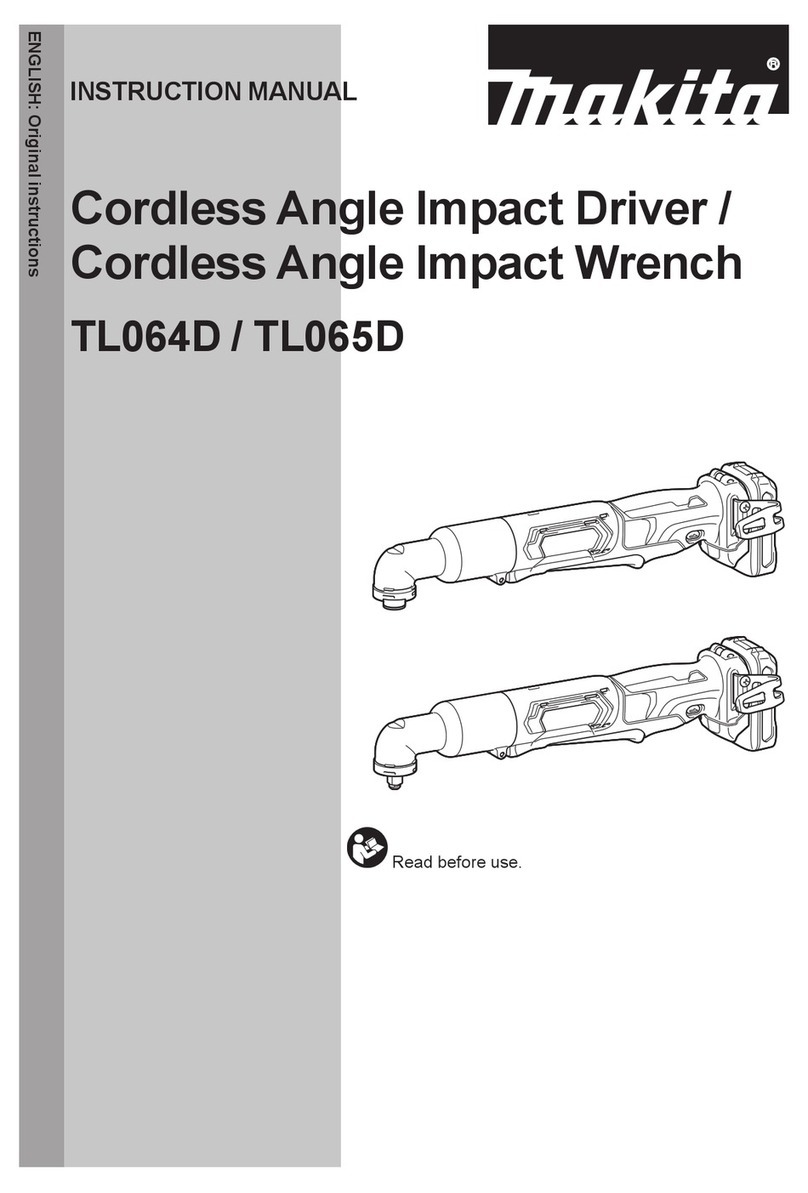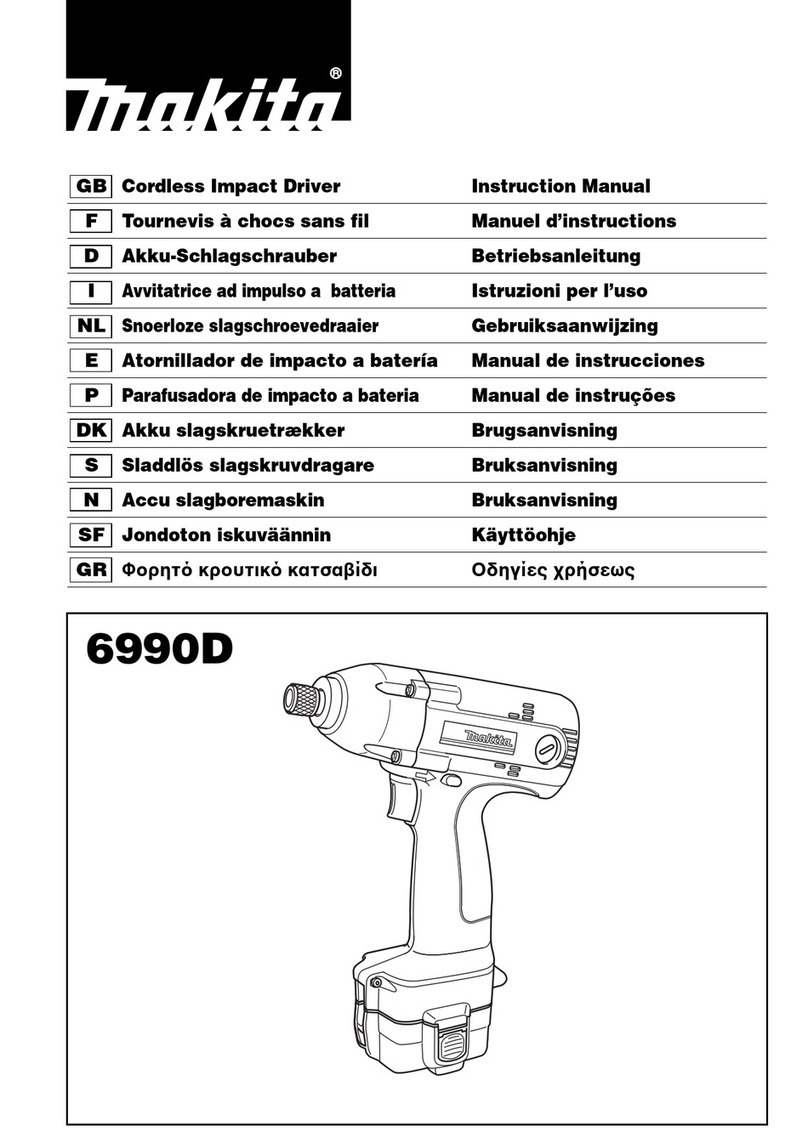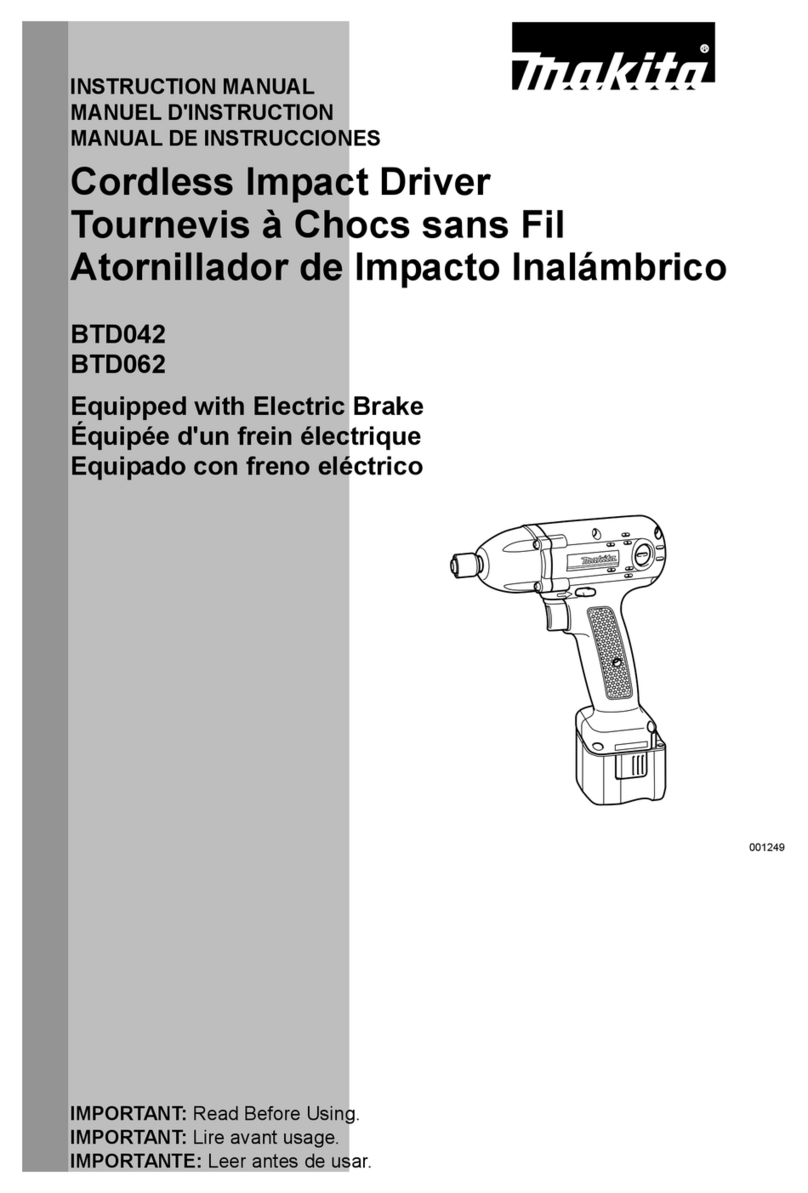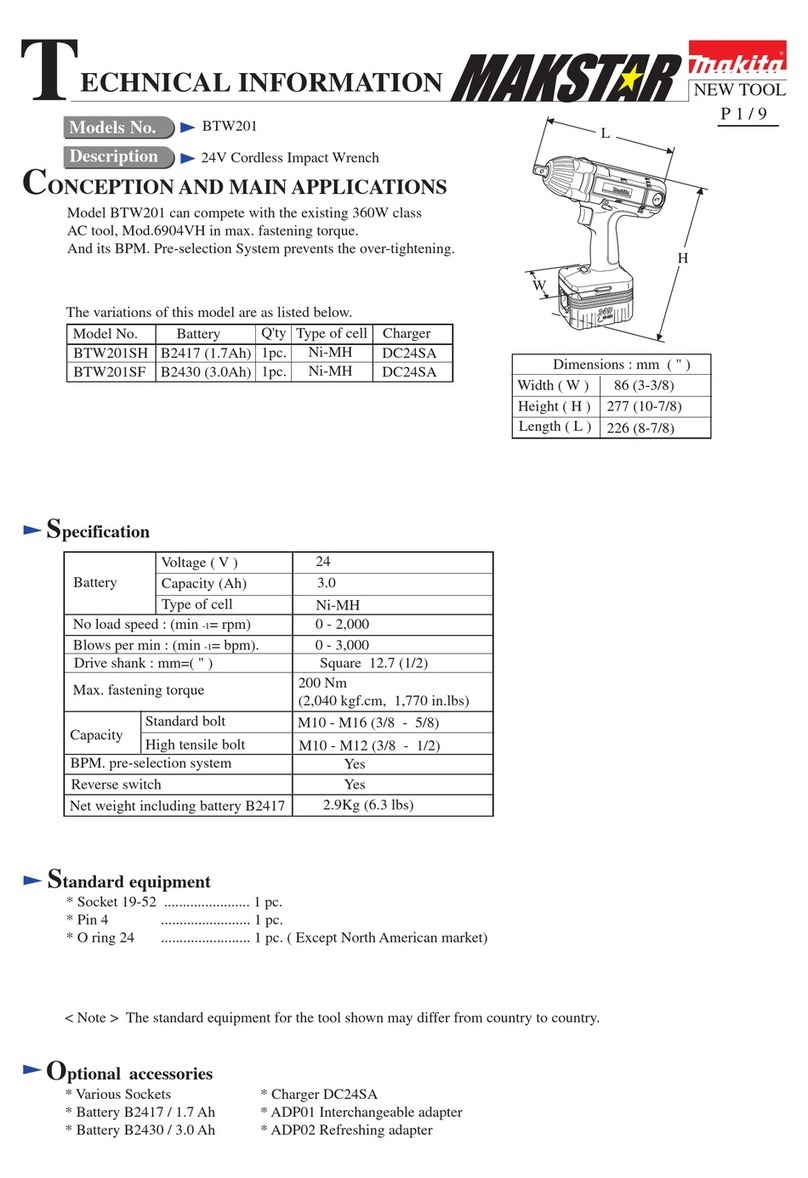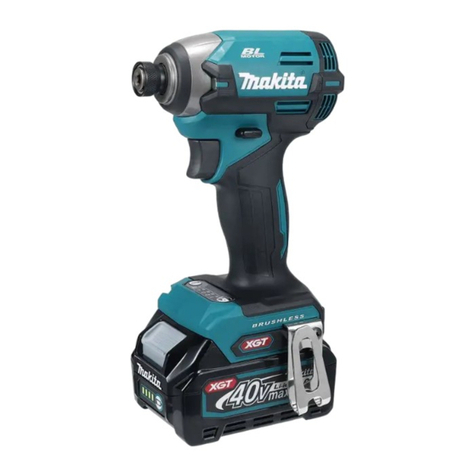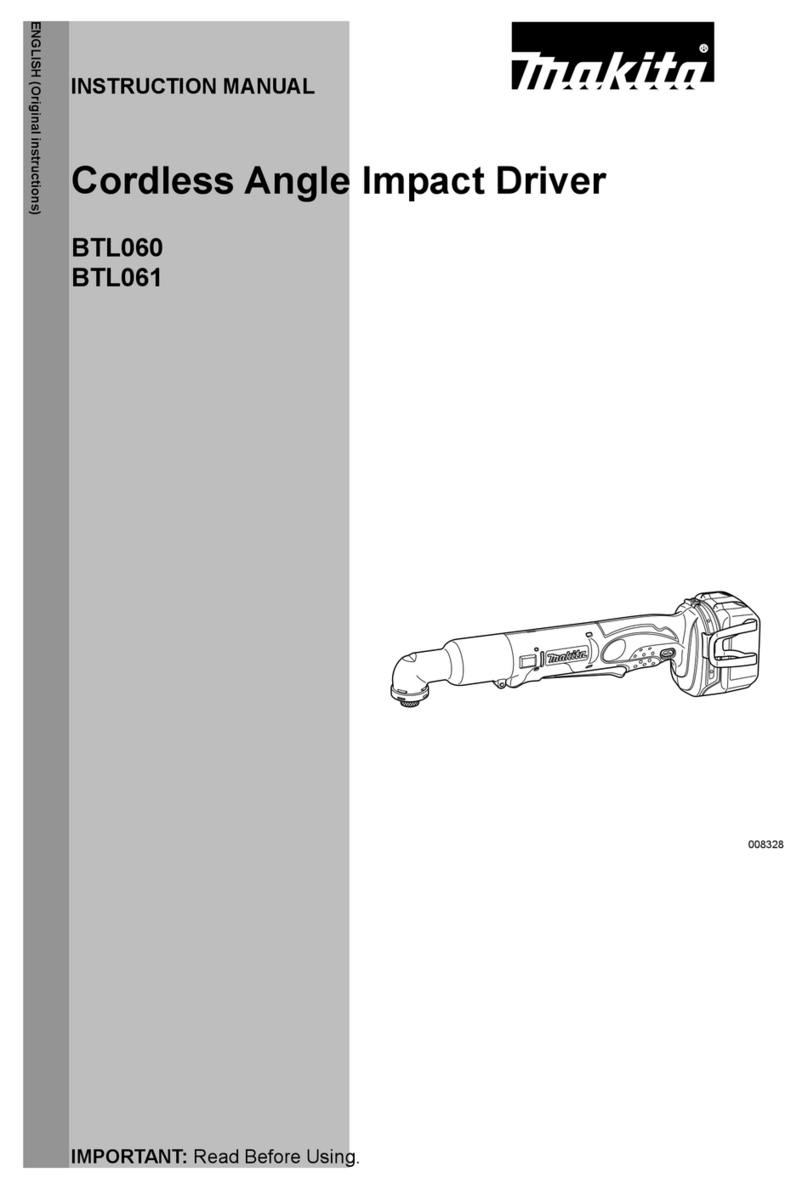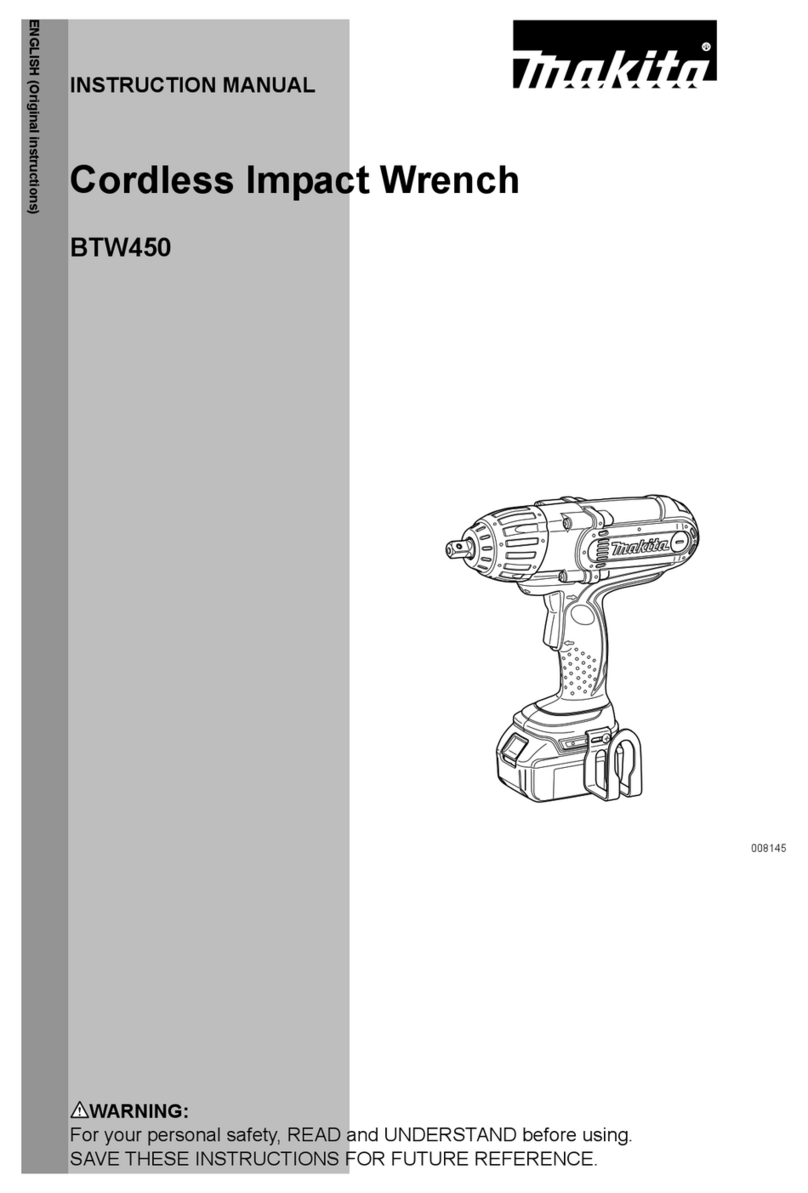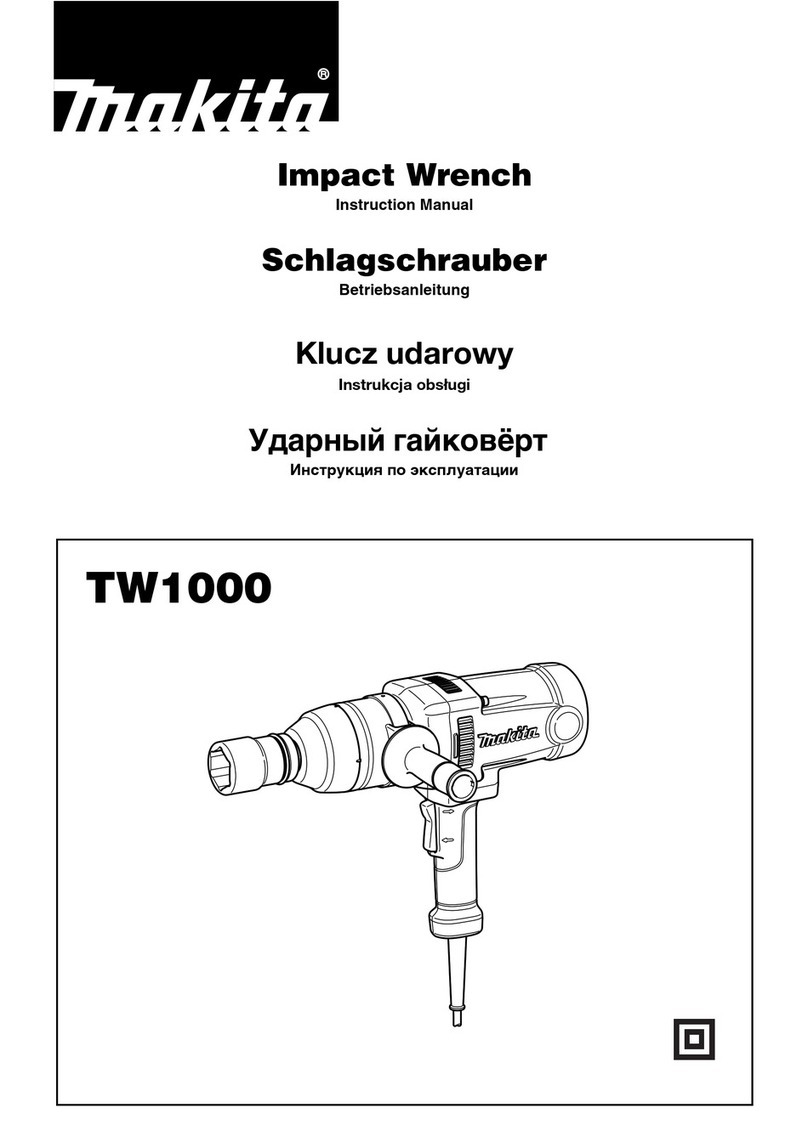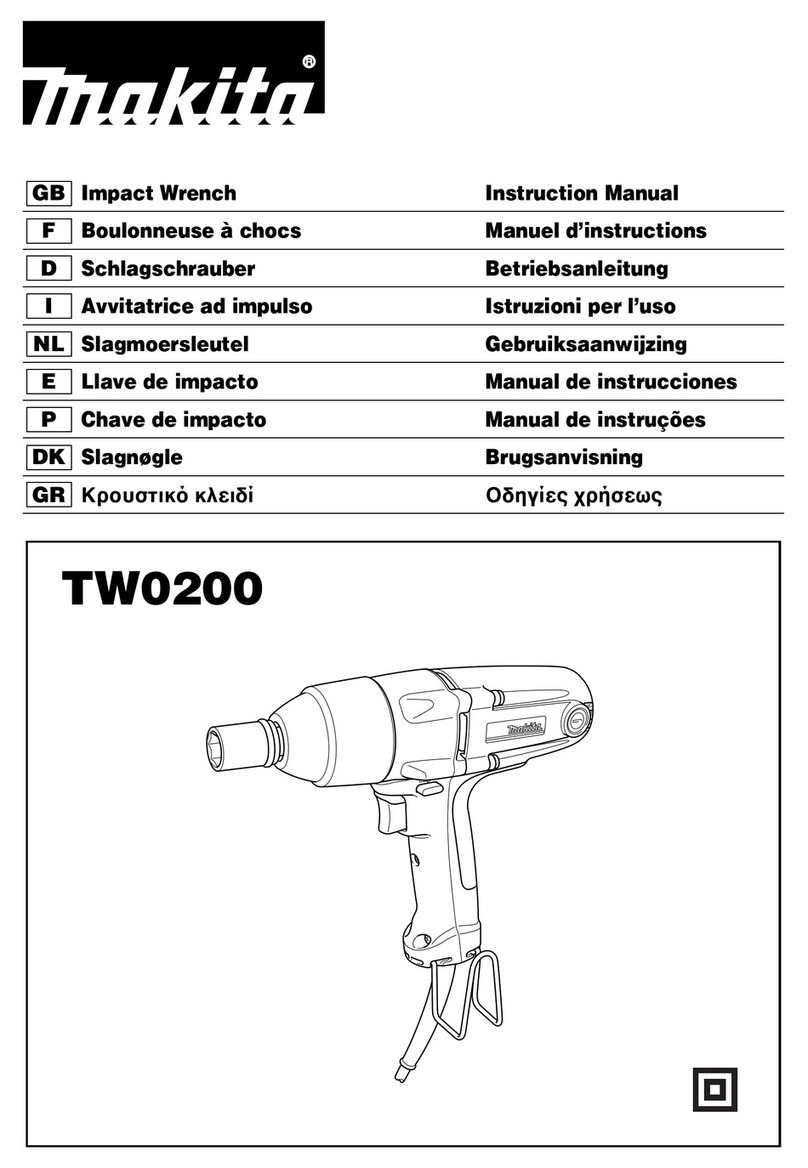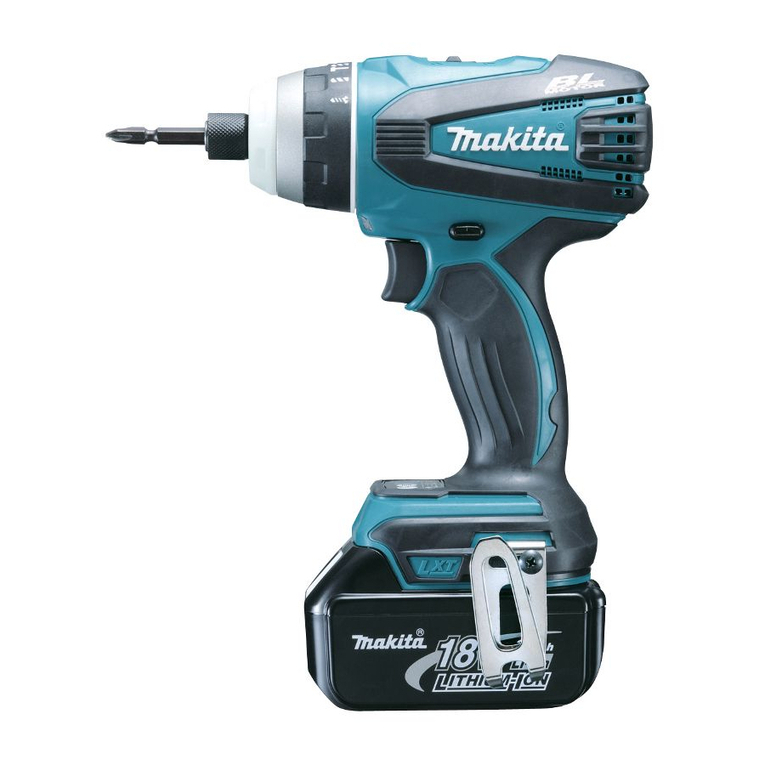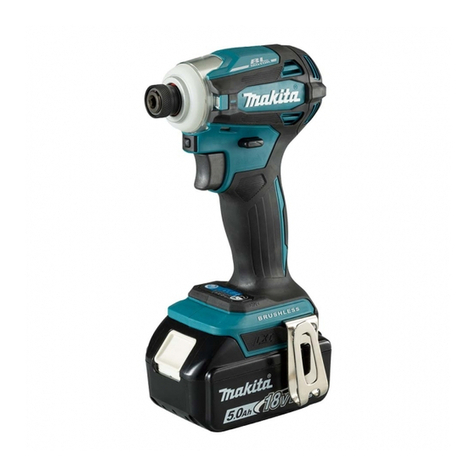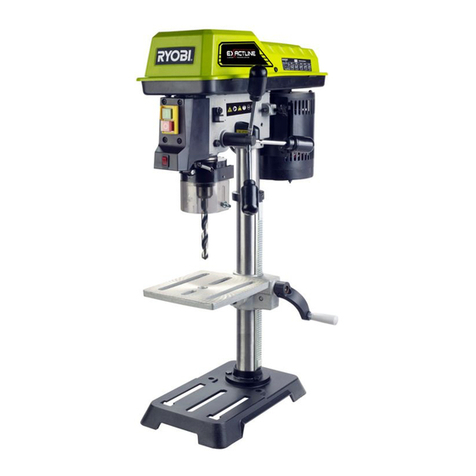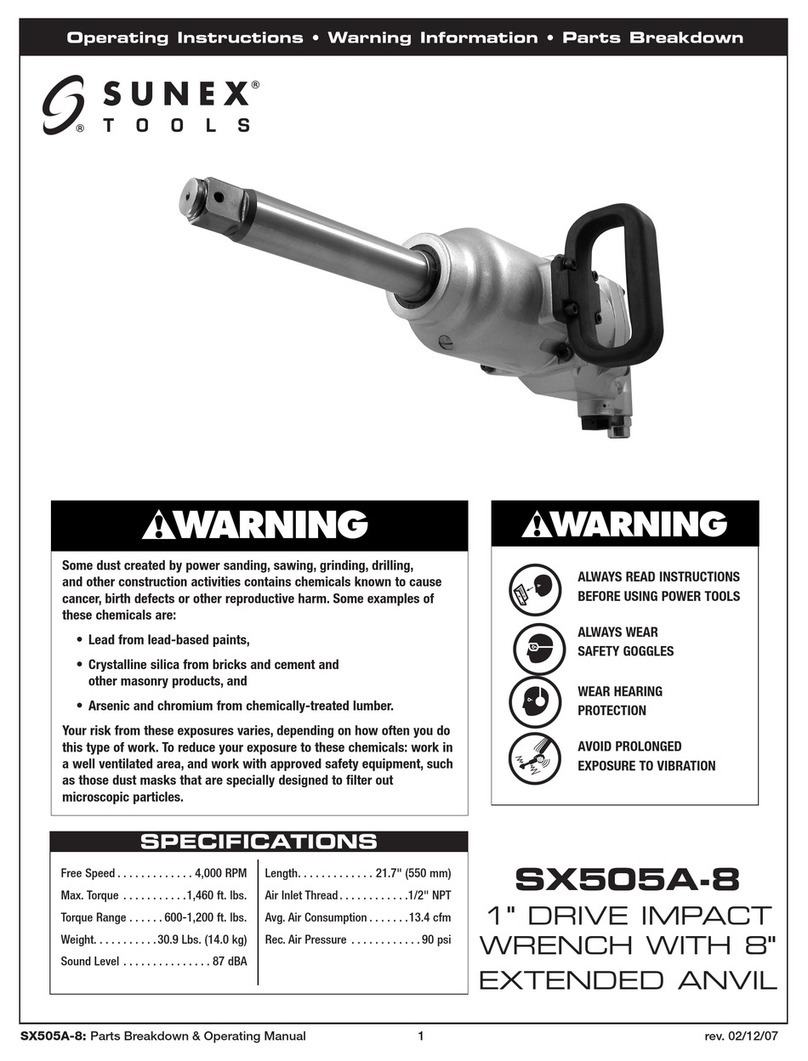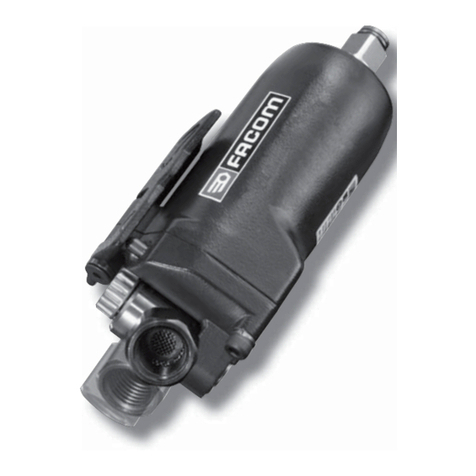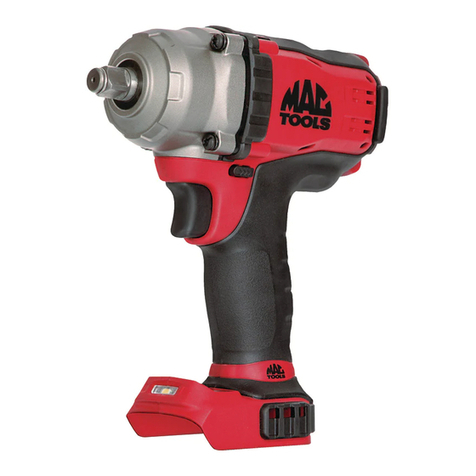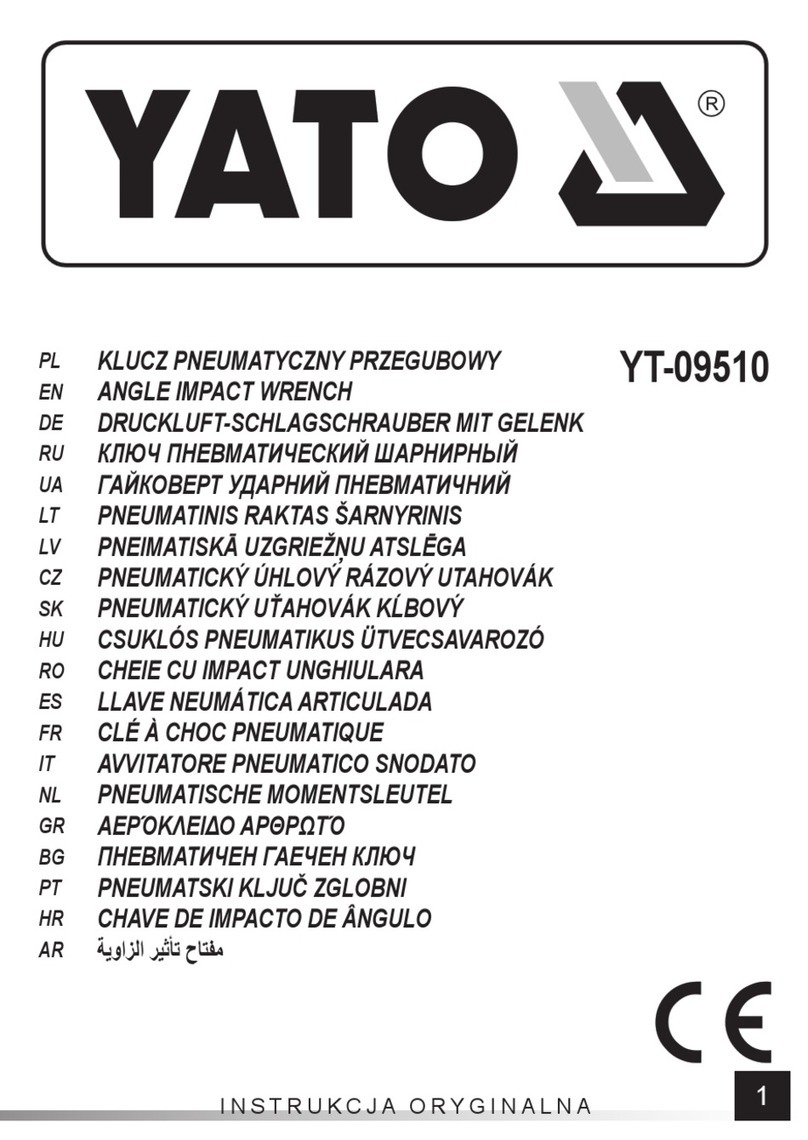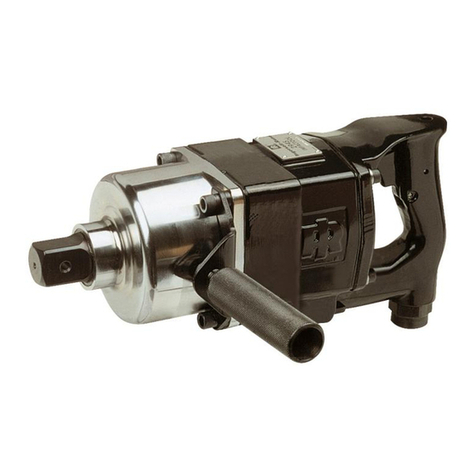Models No.
Description
PRODUCT
CONCEPT AND MAIN APPLICATIONS
P 1/ 10
BTD133
Cordless Impact Driver
Specification
Standard equipment
Optional accessories
See the model variation list above.
Note: The standard equipment for the tool shown above may differ by country.
Model BTD133 Cordless Impact Driver is an advanced version of
Model BTD132, featuring the same BLDC motor (BrushLess DC
motor) and electronic 3-stage impact power settings with variable
power control in each range as BTD132, plus redesigned belt clip
for more convenience and improved switch and electronic controller
for higher durability.
For differentiation from BTD132, equipped with transparent hammer
case cover and three stripes printed next to the "BL motor" logo.
Shoulder belt
Drill chucks
Stopper set (w/o Bit)
Stopper set (w/ Bits)
Battery protector
Hook set (Belt clip)
Bit piece
Phillips bits
Socket bits
Connecting bit 6.35-48
Tool holder
Li-ion battery 1430
Li-ion battery 1430A
Fast charger DC18RA
Charger DC18SD
Charger DC24SC
Automotive charger DC18SE
Automatic refreshing adapter ADP03
Battery
No load speed: min.-1=rpm
Impacts per min.: min.-1=ipm
Max. fastening torque*4: N.m (kgf.cm/ in.lbs)
Charging time (approx.): min.
Capacities
Electric brake
Reverse switch
Weight according to
EPTA-Procedure 01/2003 *5: kg (lbs)
Variable speed control by trigger
Capacity: Ah
Cell
Voltage: V 14.4V
0 - 2,400/ 1,800/ 1,100
0 - 3,200/ 2,600/ 1,100
160 (1,630/ 1,420)
Standard bolt
High tensile bolt
Machine screw
Driving shank
M5 - M14 (3/16 - 9/16")
M5 - M12 (3/16 - 1/2")
Coarse thread screw 22 - 125mm (7/8 - 4-7/8")
M4 - M8 (5/32 - 5/16")
Yes
Speed selection (Impact power selection) Electronic 3 stage
Yes
Yes
LED job light Yes
1.4 (3.1)
3.0
Li-ion
210
22 with DC18RA
60 with DC18SD, DC18SE
6.35mm (1/4") Hex
Max output (W)
*4 Catalog value (torque at 3 seconds after seating, when fastening M14 high tensile bolt)
*5 with Battery BL1430
This product is available in the following variations.
BTD133RFE
BTD133Z
---
BL1430
(Li-ion 3.0Ah)
No
DC18RA
No
Model No. type quantity Charger
Yes
Belt
clip
1
No
Battery
cover
Yes
No
Plastic
carrying case
2
No
Battery
Makita-blue
Housing
color
USA, Canada, Mexico, Panama
All countries except
the four described below
--- USA, Canada, Mexico, Panama
All countries except
the four described below
Offered to
Dimensions: mm (")
Width (W)
Height (H)
Length (L) 139 (5-1/2)*2
140 (5-1/2)*3
79 (3-1/8)
236 (9-1/4)
*2: with One-touch bit holder
*3: with Standard bit holder
L
H
W
TECHNICAL INFORMATION
This product is powered by 14.4V/ 3.0Ah Li-ion batteries BL1430/
BL1430A*.
*Not compatible with 14.4V/1.3Ah Li-ion battery BL1415
OFFICIAL USE
for ASC & Sales Shop
